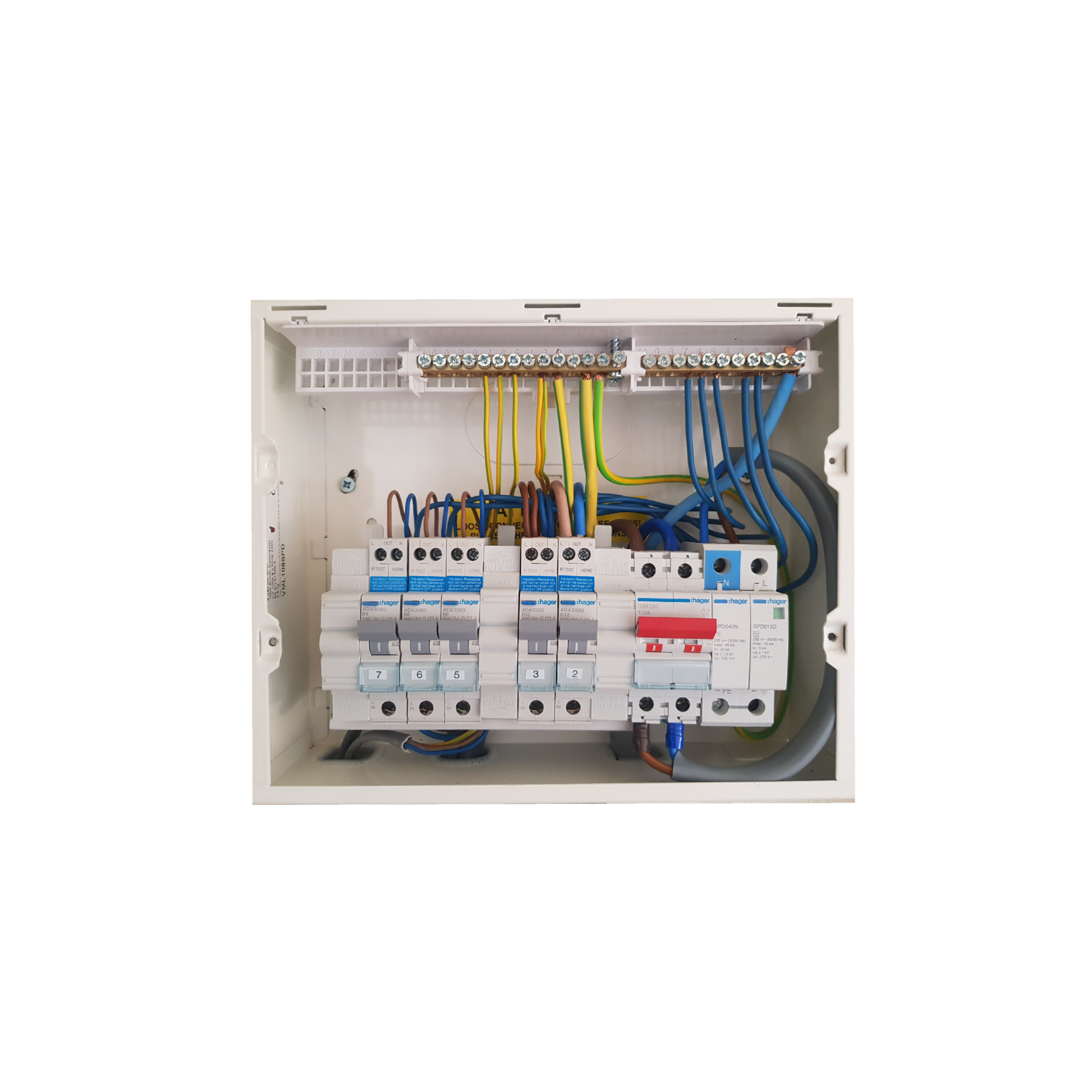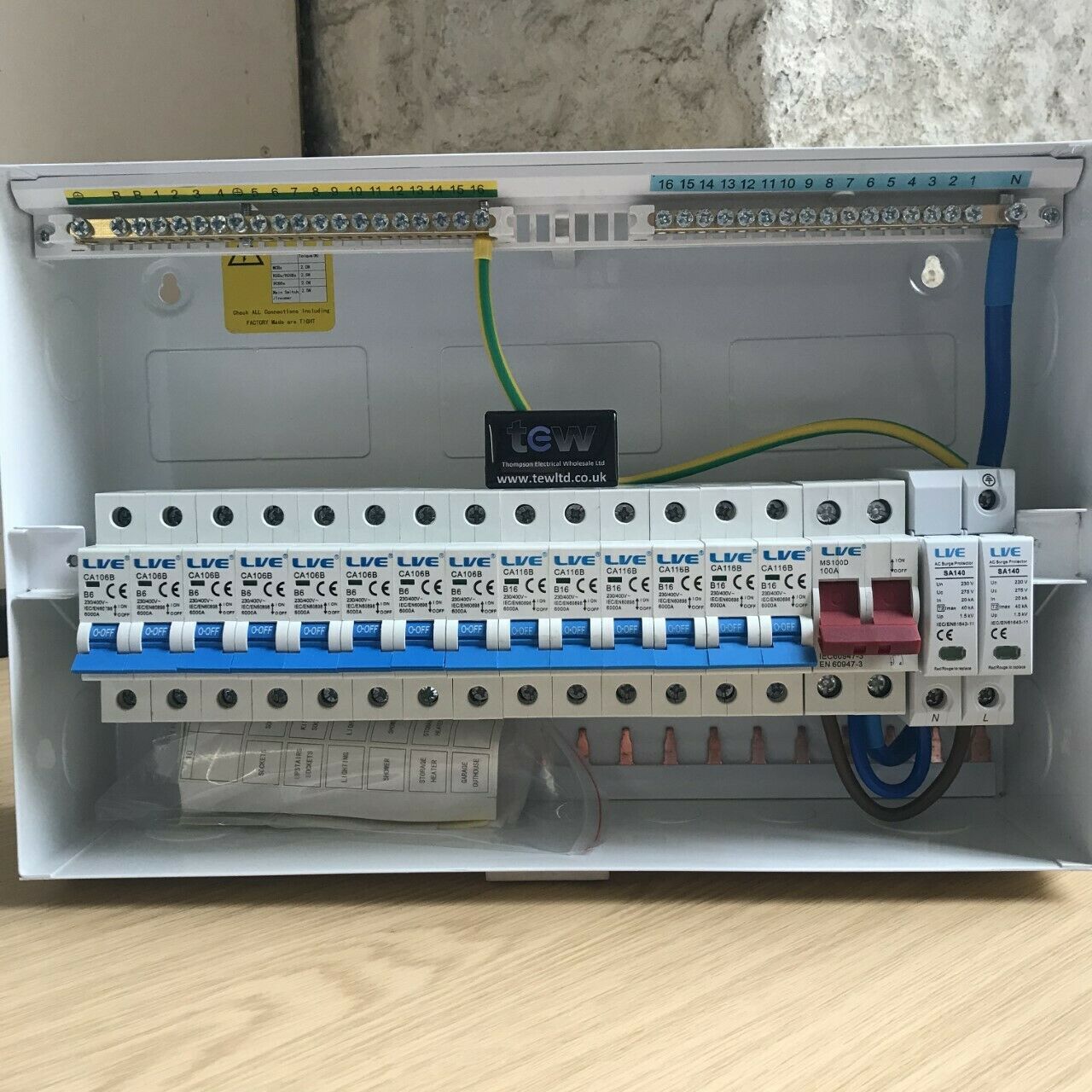How RCBO CONSUMER UNITS Improve Electrical Safety in Residential Spaces
How RCBO CONSUMER UNITS Improve Electrical Safety in Residential Spaces
Blog Article
The Function of Consumer Systems in Effective Energy Monitoring Equipment
Customer systems are indispensable to reliable power monitoring systems, serving as the primary circulation factors for electrical power within frameworks. The advent of smart technologies has even more enhanced their capability, enabling for real-time information monitoring and nuanced power intake analysis.
Recognizing Customer Units

Comprehending the function of consumer systems begins with recognizing their vital function in securing electrical systems. By isolating faults within specific circuits, consumer devices avoid extensive interruptions and prospective fire risks. This seclusion is accomplished with using breaker that journey or merges that strike when a fault is spotted, thereby removing the electric flow to the affected circuit.
Moreover, customer units promote the orderly distribution of power, boosting the effectiveness of energy usage. They enable the organized monitoring of electric lots, which can be particularly vital in commercial and industrial setups where need can fluctuate significantly. Effectively maintained customer units add to the durability of electrical systems and assist in reducing downtime brought on by electric failings, eventually supporting the smooth operation of energy-dependent facilities.
Smart Technologies Assimilation

A crucial benefit of smart consumer devices is their ability to take advantage of advanced algorithms and machine learning for anticipating analytics. This allows for preemptive changes based upon use patterns, weather report, and various other variables, dramatically boosting overall effectiveness. Additionally, clever consumer systems help with need reaction programs, where energy usage can be dynamically changed throughout height durations to maintain the grid and minimize costs.
The combination of renewable resource resources, such as solar and wind, is additionally streamlined via clever consumer systems. By wisely handling the intermittency of these sources, these units make sure a well balanced and reliable energy supply. Furthermore, smart customer units boost user engagement by providing detailed insights and push-button control capacities via mobile applications, cultivating a much more positive technique to power conservation and sustainability.
Tracking Energy Usage
Building on the capabilities of wise modern technologies integration, monitoring power intake ends up being an important focus within power administration systems. By leveraging innovative metering index facilities (AMI), real-time information on power usage can be accumulated at granular levels, supplying useful understandings right into usage patterns and peak need periods.
Smart meters and Web of Things (IoT) tools play a pivotal function in this surveillance procedure. These devices can track energy usage in real-time, transferring information to central systems for evaluation.
The assimilation of these technologies not just empowers consumers with in-depth info about their energy use but also supports utility suppliers in taking care of tons distribution a lot more efficiently. Eventually, continual and specific surveillance is indispensable for accomplishing power effectiveness, expense savings, and sustainability objectives within power administration systems.
Optimizing Home Appliance Use

One reliable approach entails identifying peak and off-peak hours to shift energy-intensive tasks, such as laundry or dishwashing, to times when energy demand is lower. This not just decreases strain on the grid yet additionally maximizes reduced power tolls. Furthermore, integrating device knowing algorithms permits predictive upkeep, making certain devices run at ideal efficiency and lengthening their lifespan.
Energy administration systems can likewise incorporate user-specific preferences and habits to customize appliance use routines. Clever illumination systems can adjust brightness based on tenancy and all-natural light schedule, while A/c systems can preserve convenience degrees without excessive power use.
Supporting Sustainability
Advertising sustainability within energy management systems entails not just enhancing effectiveness yet also fostering eco responsible practices. Customer units are indispensable to this process, as they give real-time information and control systems that allow users to check and reduce their energy intake. By leveraging innovative technologies, consumer systems can recognize energy-saving chances and assist in the assimilation of renewable energy resources like solar and wind power.
One important facet of advertising sustainability is educating consumers on the benefits of liable energy use. With comprehensive understandings offered by customer systems, users can make informed decisions that reduce their carbon footprint. These devices can recommend optimal times for operating high-energy devices based on grid need and renewable power accessibility, thereby decreasing dependence on fossil gas.
Furthermore, customer devices support the fostering of wise grid technologies, which enhance the total performance and reliability of power circulation. By allowing two-way communication between customers and utility service providers, these systems can dynamically adapt to power demands, decreasing waste and promoting the use of lasting power practices.
Verdict
Consumer devices, as indispensable elements of energy administration systems, considerably enhance electric safety and security and efficiency within structures with circuit protection and clever innovation combination. Real-time information tracking and analysis assisted in by these devices enhance power usage and device use. In addition, the consolidation my site of renewable power sources promotes sustainable techniques, contributing to lowered total power consumption and lower carbon impacts. As a result, consumer devices play an essential duty ahead of time both energy efficiency and environmental sustainability.
Developments in clever technologies have changed the capacities of power management systems, especially with the combination of clever customer systems.Building on the capacities of wise innovations assimilation, keeping track of energy consumption ends up being an essential emphasis within energy management systems.Efficient device use optimization is a crucial element of energy administration systems, aiming to boost efficiency and reduce unneeded power intake.Consumer systems, as important elements of energy monitoring systems, considerably enhance electrical safety and performance within buildings through circuit protection and smart technology combination. In addition, the incorporation of renewable energy resources promotes sustainable techniques, adding to lowered total power consumption and lower carbon impacts.
Report this page